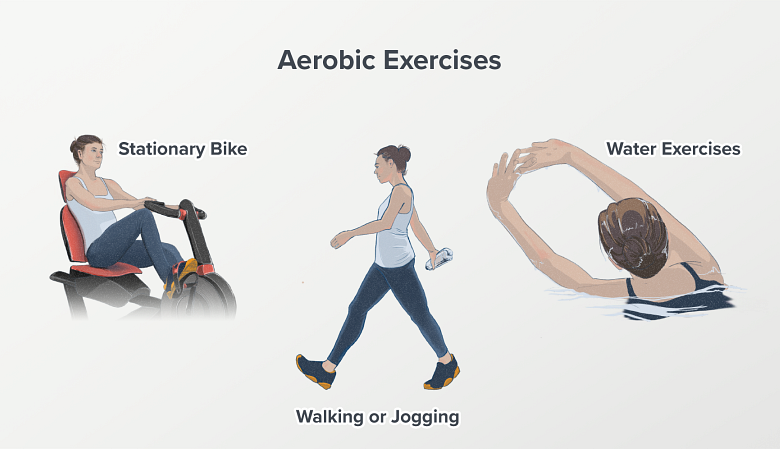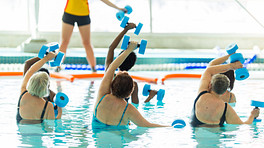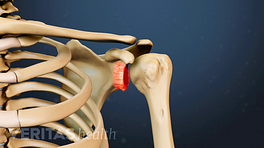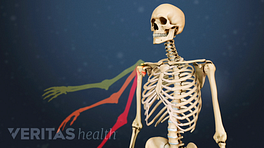In addition to specific stretching and strengthening exercises, most people with shoulder arthritis will benefit from a regular routine of low-impact aerobic exercise.
Aerobic exercise can be a beneficial part of a shoulder arthritis treatment plan.
Most medical experts recommend an aerobic conditioning program that is tailored to the individual’s situation, including his or her level of arthritis pain and fitness level.
In This Article:
- Shoulder Exercises for Arthritis
- Shoulder Stretches
- Shoulder Strengthening Exercises
- Aerobic Exercise for Shoulder Arthritis
Aerobic Exercise for Shoulder Arthritis
Since the shoulder does not bear weight like the knees and hips, those suffering from shoulder arthritis can walk, jog, and use aerobic gym equipment such as treadmills.
Patients with moderate to advanced shoulder pain and stiffness may find it best to avoid aerobic exercise that involves use of the shoulder, such as using an elliptical trainer or swimming.
Patients with more advanced symptoms may find swimming too challenging but may try a water aerobics or other water exercise classes. For most, water therapy (pool therapy) is tolerable, affording aerobic health benefits without stressing the shoulder too much.
See Water Workouts Ease Fibromyalgia Pain
Exercising while in the water provides advantages, including:
- Buoyancy, with the support of the water reducing pressure on joints
- Resistance, requiring muscles to work harder to move (e.g. walking in waist-deep water is more difficult than walking on land).
Many local YMCAs and health clubs have pools and offer water exercise classes designed for people looking for a low-impact workout.
It is best to gradually increase the intensity of the aerobic workout, ideally in concert with recommendations from a physician or other qualified health professional.
The goal is to incorporate low impact aerobic exercise into one’s daily routine. The US Department of Health and Human Services recommends a minimum of 150 minutes of moderately intense aerobic activity each week, or 30 minutes five days per week. Individuals who can easily meet this goal can then increase the level of intensity of their workout.











